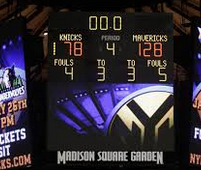 The flu is really pissed off this year, and wants to take it out on your lungs. And there isn't a whole lot you can do about it. The annual vaccine, which normally is about 60 percent effective, is a disturbingly low 23 percent this year, according to a new CDC report.
The flu is really pissed off this year, and wants to take it out on your lungs. And there isn't a whole lot you can do about it. The annual vaccine, which normally is about 60 percent effective, is a disturbingly low 23 percent this year, according to a new CDC report.
This will no doubt fire up the conspiracy industry, and it is all but certain that the lunatics will start ranting about the massive conspiracy by the pharmaceutical industry, the government, and other sordid entities against the American people.
Given this poor protection rate, it is not impossible that their numbers will grow. This is why it is especially important for people to understand who is really to blame for this mess: No one.
It is really hard to get it right when it comes to choosing which strains of flu to include in the vaccine. Why? Because this decision is made six months before the typical start of the flu season. The decision needs to be made so early because it takes months to grow the vaccine (in chicken eggs lots of them).
Here's how it works. Every year, samples of the flu virus are collected in more than 100 countries. These, along with epidemiological reports are sent to one of five World Health Organization (WHO) research centers. Based on these data (and there is an incredible amount of it), the WHO recommends the three strains that should be included in the vaccine for the following winter. Individual countries may accept these recommendations, or license a different combination. In the US, the Advisory Committee on Immunization Practices (ACIP), part of the CDC, makes this decision.
ACSH advisor Dr. David Shlaes, the former vice president of infectious disease research at Wyeth, has never heard of such a poor match. He elaborates: These sorts of low efficacies are not surprising when the antigenic drift causes enough of an alteration in the targeted antigen. This illustrates one of the big problems we have with the way we make these vaccines. Most manufacturers grow influenza virus in eggs to manufacture our standard killed vaccine. This takes a good deal of time. Live virus is then harvested, purified and killed before being formulated into the vaccine. So we try and guess which virus will hit us at least six months ahead of time based on data from other parts of the world. As this year demonstrates, six months sometimes might as well be forever. We either need to get away from this approach altogether by either (1) targeting a more constant portion of the virus not susceptible to antigenic shifts and drifts or (2) developing methods to grow and harvest the virus much more quickly or both. Both of these have been high research priorities globally for the last several decades and progress is certainly being made on the former.
ACSH s Dr. Josh Bloom, a former antiviral researcher says, Given the inherent problems described by Dr. Shlaes, I think they do a pretty job, since at best, this is an educated guess.
So, what do you do? Dr. Bloom says, There are no great choices this year. Even if the vaccine protects one-quarter of the population, it will still save lives. With virtually no downside, the vaccine is still your best chance. After that, it gets worse.
This is because the three drugs that are used to combat flu don t work very well. Not even close. Some doctors question whether they work at all. The drugs, when given within two days of the start of symptoms may decrease the severity of the infection, and cut its duration from about 7 days to about 6.
So, what do you do? Dr. Bloom says, The recommendations to lower your chances of catching flu are the same ones you hear for other communicable diseases: wash your hands a lot, don t touch your eyes, and avoid crowded places if possible. Fortunately in New York we have a perfect place to do just this. It s called Madison Square Garden.


